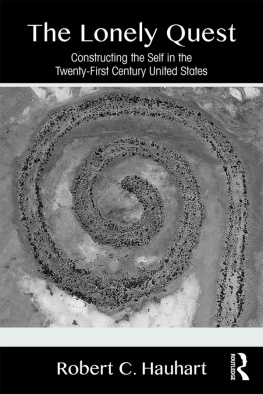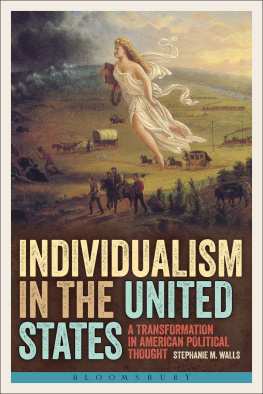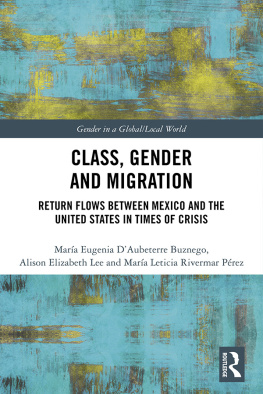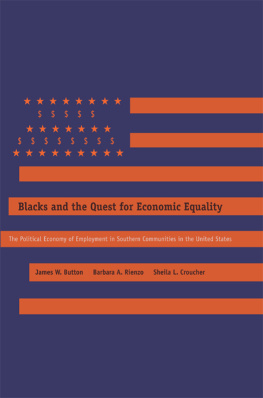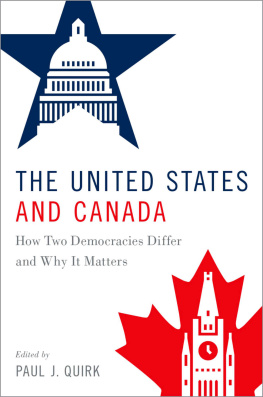The Lonely Quest
Today the United States is a country divided along lines of gender, economic inequality, educational level, and political affiliation. Democrats typically select a different range of matters of serious public concern compared to Republicans. Many Americans describe difficulty in coming to terms with the demands placed on them in their work, communities, and personal lives and achieving satisfaction. The institutional crises that pervade our politics, economy, educational systems, and communities have inspired a contemporary crisis: a widespread inability for many to live as integrated, effective selves in the twenty-first century United States. Drawing on a wide range of historical and contemporary research, The Lonely Quest explores the dilemma of constructing the self in the U.S. today.
Robert C. Hauhart is a professor in the Department of Society and Social Justice at Saint Martins University, Lacey, WA. He is the author, most recently, of Seeking the American Dream: A Sociological Inquiry (2016) and the recipient of a Fulbright Scholar Award to Slovenia for Spring, 2019.
The Lonely Quest
Constructing the Self in the Twenty-First Century United States
Robert C. Hauhart

First published 2019
by Routledge
52 Vanderbilt Avenue, New York, NY 10017
and by Routledge
2 Park Square, Milton Park, Abingdon, Oxon, OX14 4RN
Routledge is an imprint of the Taylor & Francis Group, an informa business
2019 Taylor & Francis
The right of Robert C. Hauhart to be identified as author of this work has been asserted by him in accordance with sections 77 and 78 of the Copyright, Designs and Patents Act 1988.
All rights reserved. No part of this book may be reprinted or reproduced or utilised in any form or by any electronic, mechanical, or other means, now known or hereafter invented, including photocopying and recording, or in any information storage or retrieval system, without permission in writing from the publishers.
Trademark notice: Product or corporate names may be trademarks or registered trademarks, and are used only for identification and explanation without intent to infringe.
Library of Congress Cataloging-in-Publication Data
A catalog record for this book has been requested
ISBN: 978-1-138-04959-8 (hbk)
ISBN: 978-1-138-04961-1 (pbk)
ISBN: 978-1-315-16950-7 (ebk)
Typeset in Avenir and Dante
by Apex CoVantage, LLC
Contents
Is it Hard to Make Arrangements With Yourself?
The question posed as a subtitle to these opening remarks is from Tell Me Why by Neil Young, which appears on his 1970 album, After the Gold Rush (Reprise Records). It encapsulates, in one sense, the quandary that many contemporary Americans seem to feel about themselves and serves as modest shorthand for what might otherwise be a lengthy explanation of the origin, and nature, of the book that follows.
I began thinking about the ideas that animate this book in the wake of publishing Seeking the American Dream: A Sociological Inquiry (New York: Palgrave Macmillan 2016). In that book I traced the ideas that ultimately congealed into the iconic national notion of the American Dream. Coined and elucidated in print for the first time in 1931 by James Truslow Adams in his book The Epic of America, the phrase has had a checkered journey from idealized American aspiration to unattainable mirage to culturally denigrated pursuit of bland mediocrity. Regardless of which vision of the American Dream one prefers, however, one of the things that struck me was the difficulty that many Americans seem to experience today in choosing the way to exercise their freedom of choice, pursue happiness, andultimatelydecide who they are as a person. I felt that I needed to investigate these issues and write about them.
In looking around, I found that many American researchers and writers have struggled with this question before. Joan Didion, in her essay Pacific Distances in After Henry (1992:112113), reflected:
Our children remind us of how random our lives have been. I had occasion in 1979 to speak to my daughters school in Los Angeles, and I stood there, apparently a grown woman, certainly a woman who had stood up any number of times and spoken to students around the country, and tried to confront a question that suddenly seemed almost impenetrable. How had I become a writer, how and why had I made the particular choices I had made in my life?
Didions reflection about her own journey is but a single exemplar of innumerable examinations of what it means to be a self within society that stretch back to time immemorial. These meditations are not limited to Americans who, after all, are a relatively recent addition to the historical record unless one counts indigenous (i.e., native) Americans, whichdue to our ethnocentrismwe normally do not. Arguably, however, the task of being, and becoming, a self has been made more difficult by the many changes documented over the last two centuries which have irrevocably altered life experience for Americans althoughincreasinglyglobalization has extended the impact of those changes internationally.
Historically, the language used to consider the nature of the self has shifted from one era or culture to the next. Aristotle, in the Nichomachean Ethics (Book V), examined the character of mankind in light of a persons disposition to engage in just acts and to aspire to achieve just relations as compared to the person who acts unjustly, either by breaking the law or knowingly taking more than his or her due at the expense of others (Morris 1959:16). Although it is inaccurate to say that justice and injustice are no longer meaningful concepts with respect to the formation of contemporary character in the United States, Aristotles approach conveys a notion that bears a somewhat antique intellectual flavor today. For one thing, Aristotles focus on individual character is at odds with more contextual modern analyses that locate the person within a matrix of institutions and settings so that the cultural environment is accorded more influence than Aristotles thinking reflected. Second, Aristotle wrote before both modernism and post-modernism developed and, as such, had substantially more confidence that a discernible social reality existedand could be perceived accurately and acted upon reliablythan perhaps many thinkers would assert, or even acknowledge, today.
Turning to one modern writer whose essential orientation is perhaps at one extreme from Aristotles approach, Erving Goffman begins his seminal The Presentation of Self in Everyday Life (1959:19) in by observing:
When an individual plays a part he implicitly requests his observers to take seriously the impression that is fostered before them.
Thus, in contradistinction to Aristotles belief that a man is known, and comes to know himself or herself, by the quality of the acts he or she engages in and the nature of the expressed motivations for acting, Goffmans figure is merely engaged in a temporary performance before a certain audiencea performance that will have a beginning and an end and which may, or may not, ever be taken up again. Moreover, even if the figures performance is continued or resumed, it will be reconstitutedsince it can never quite be the same performance as beforeand the audience will be a new one as old members will be replaced by new in a different setting and so forth. For Goffman, then, the self is nothing more, perhaps, than a series of these performancescarried out for different reasons before different audiences and intended to elicit a momentary belief in the enactment by those for whom the self-presentation is displayed. If the audience to such a display suspends disbelief and in todays parlance buys in to the self-narrative offered, then the performer has created a successful selfalbeit a self that can be jettisoned at any opportune moment once the figure exits the immediate stage. In a new setting some other self will be called for and the effort will be put forth to present another suitable performance. Such a mobile and malleable self brings into question the entire notion of character and, indeed, of the type of self that heretofore has been the subject of study. Still, the modern and post-modern self that Goffman and other writers have projected cant be dismissed out of hand as there is substantial evidence that the pliant self, attuned to the fluidity of social intercourse in our age, is an adaptive mechanism developed and sustained by many of the forces I will examine throughout this book. Indeed, the group of theorists who have taken up the study of modernity and globalization have coined an array of concepts to address this newly adaptable selfthe plastic self, the liquid self, the reflexive self, reflexive individualization, and so forth. (In this regard they follow the time-honored tradition of believing that one can contribute to a better understanding of a phenomenon simply by renaming it or developing a new euphemism.)

